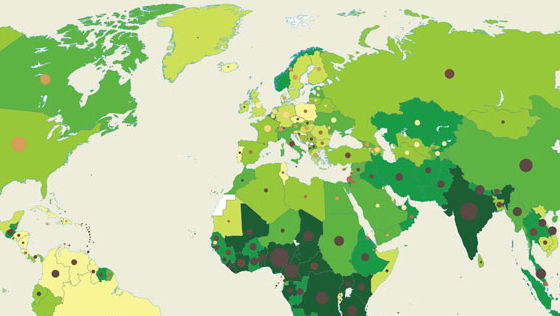States and countries with great geographic diversity generally have greater linguistic diversity as well

States and Countries with Great Geographic Diversity Generally Have Greater Linguistic Diversity as Well

When it comes to exploring the world, there’s no denying the allure of states or countries teeming with geographical wonders. From towering mountain ranges to expansive deserts, diverse coastal landscapes to lush rainforests, these regions captivate our imagination and offer endless opportunities for adventure. What many may not realize is that these same areas often boast incredible linguistic diversity as well.
The Correlation Between Geographic and Linguistic Diversity

It’s fascinating to discover that there exists a correlation between geographic and linguistic diversity. This link stems from numerous factors that shape the languages spoken in a particular region. As we explore this connection, we can find examples of this phenomenon across the globe.
Topographic Features and Linguistic Diversity
The diverse topographic features of a region play a significant role in shaping its linguistic diversity. For instance, mountainous areas fragmented by valleys and deep gorges tend to exhibit higher linguistic diversity. Isolated communities develop unique dialects and languages due to the geographical barriers that hinder regular communication and interaction.
In North Carolina, an eastern U.S. state famous for its Appalachian Mountains and stunning coastal plains, this correlation is evident. This southeastern state harbors a rich linguistic tapestry due to its varied terrain, resulting in a multitude of dialects and languages. From the distinctive Appalachian English spoken in the mountains to the distinct Gullah dialect along the coast, North Carolina showcases the remarkable diversity that can emerge from geographical variations.
Climatic Variation and Linguistic Evolution
Climate can also influence linguistic diversity by affecting human migration patterns and cultural development. In regions with extreme differences in climatic conditions, the way people communicate and express themselves can vary greatly. These differences can be observed in the languages spoken, enabling us to identify distinct linguistic groups.
The Indian subcontinent, with its remarkable climatic variation, demonstrates this correlation exceptionally well. From the icy peaks of the Himalayas to the sweltering heat of the Thar Desert, India boasts an astounding array of languages, dialects, and accents. The diverse climate has shaped the linguistic diversity of the country, resulting in a tapestry of languages spoken across different regions.
Historical Factors and Linguistic Diversity
History has also played a significant role in shaping linguistic variations. Colonization, migration, and cultural exchange have led to the blending of languages, giving rise to new dialects and forms of communication.
Europe, known for its rich history and complex cultural interactions, showcases this diversity. Small countries like Switzerland, with its varied topography, have four national languages (German, French, Italian, and Romansh) due to historical influences and geographical proximity to neighboring linguistic regions. This unique linguistic landscape stands as a testament to the interplay between geography and language.
Preserving Linguistic Diversity
In a rapidly globalizing world, linguistic diversity faces the threat of erosion. As dominant languages spread and cultures intertwine, many indigenous languages face extinction. However, recognizing the significance of linguistic diversity is crucial for the preservation of cultural heritage and maintaining a vibrant global tapestry of languages.
Efforts are being made worldwide to document and revitalize endangered languages, ensuring their survival for future generations. By acknowledging the correlation between geographic and linguistic diversity, we can appreciate the uniqueness of each region’s languages and work towards their preservation.
Sources:
Tags
Share
Related Posts
Quick Links
Legal Stuff

